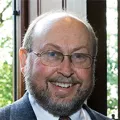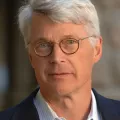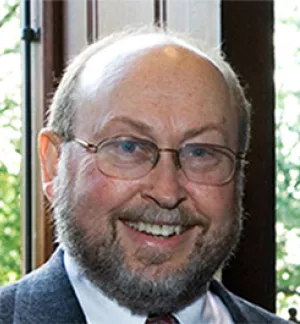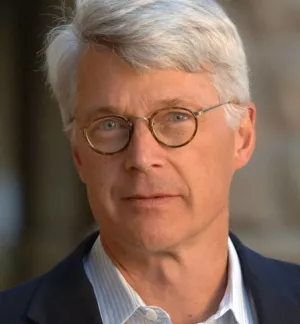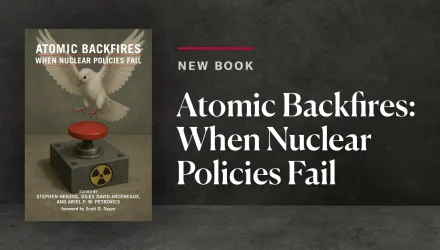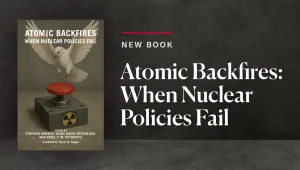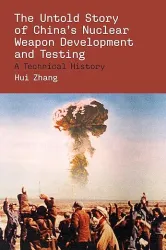Introduction to Volume 1 of the On the Global Nuclear Future Special Issue
Excerpt from "Nuclear Power Without Nuclear Proliferation?":
Today, the Cold War has disappeared but thousands of those weapons have not. In a strange turn of history, the threat of global nuclear war has gone down, but the risk of a nuclear attack has gone up. More nations have acquired these weapons. Testing has continued. Black market trade in nuclear secrets and nuclear materials abound. The technology to build a bomb has spread. Terrorists are determined to buy, build or steal one. Our efforts to contain these dangers are centered on a global non-proliferation regime, but as more people and nations break the rules, we could reach the point where the center cannot hold.
—President Barack Obama Prague, April 5, 2009
The global nuclear order is changing. Concerns about climate change, the volatility of oil prices, and the security of energy supplies have contributed to a widespread and still-growing interest in the future use of nuclear power. Thirty states operate one or more nuclear power plants today, and according to the International Atomic Energy Agency (IAEA), some 50 others have requested technical assistance from the agency to explore the possibility of developing their own nuclear energy programs. It is certainly not possible to predict precisely how fast and how extensively the expansion of nuclear power will occur. But it does seem probable that in the future there will be more nuclear technology spread across more states than ever before. It will be a different world than the one that has existed in the past.
This surge of interest in nuclear energy — labeled by some proponents as "the renaissance in nuclear power" — is, moreover, occurring simultaneously with mounting concern about the health of the nuclear nonproliferation regime, the regulatory framework that constrains and governs the world's civil and military-related nuclear affairs. The Nuclear Non-Proliferation Treaty (NPT) and related institutions have been taxed by new worries, such as the growth in global terrorism, and have been painfully tested by protracted crises involving nuclear weapons proliferation in North Korea and potentially in Iran. (Indeed, some observers suspect that growing interest in nuclear power in some countries, especially in the Middle East, is not unrelated to Iran's uranium enrichment program and Tehran's movement closer to a nuclear weapons capability.) Confidence in the NPT regime seems to be eroding even as interest in nuclear power is expanding.
This realization raises crucial questions for the future of global security. Will the growth of nuclear power lead to increased risks of nuclear weapons proliferation and nuclear terrorism? Will the nonproliferation regime be adequate to ensure safety and security in a world more widely and heavily invested in nuclear power? The authors in this two-volume (Fall 2009 and Winter 2010) special issue of Dædalus have one simple and clear answer to these questions: It depends.
On what will it depend? Unfortunately, the answer to that question is not so simple and clear, for the technical, economic, and political factors that will determine whether future generations will have more nuclear power without more nuclear proliferation are both exceedingly complex and interrelated. How rapidly and in which countries will new nuclear power plants be built? Will the future expansion of nuclear energy take place primarily in existing nuclear power states or will there be many new entrants to the field? Which countries will possess the facilities for enriching uranium or reprocessing plutonium, technical capabilities that could be used to produce either nuclear fuel for reactors or the materials for nuclear bombs? How can physical protection of nuclear materials from terrorist organizations best be ensured? How can new entrants into nuclear power generation best maintain safety to prevent accidents? The answers to these questions will be critical determinants of the technological dimension of our nuclear future.
The major political factors influencing the future of nuclear weapons are no less complex and no less important. Will Iran acquire nuclear weapons; will North Korea develop more weapons or disarm in the coming decade; how will neighboring states respond? Will the United States and Russia take significant steps toward nuclear disarmament, and if so, will the other nuclear-weapons states follow suit or stand on the sidelines?
The nuclear future will be strongly influenced, too, by the success or failure of efforts to strengthen the international organizations and the set of agreements that comprise the system developed over time to manage global nuclear affairs. Will new international or regional mechanisms be developed to control the front-end (the production of nuclear reactor fuel) and the back-end (the management of spent fuel containing plutonium) of the nuclear fuel cycle? What political agreements and disagreements are likely to emerge between the nuclear-weapons states (NWS) and the non-nuclear-weapons states (NNWS) at the 2010 NPT Review Conference and beyond? What role will crucial actors among the NNWS — Japan, Iran, Brazil, and Egypt, for example — play in determining the global nuclear future? And most broadly, will the nonproliferation regime be supported and strengthened or will it be questioned and weakened? As IAEA Director General Mohamed ElBaradei has emphasized, "The nonproliferation regime is, in many ways, at a critical juncture," and there is a need for a new "overarching multilateral nuclear framework."1 But there is no guarantee that such a framework will emerge, and there is wide doubt that the arrangements of the past will be adequate to manage our nuclear future effectively.
The authors in both this and the subsequent volume address these and other vexing issues that will affect the spread of nuclear power and the spread of nuclear weapons. As is necessary to understand such a complex set of real-world issues, the authors represent diverse academic disciplines (including physical sciences, engineering, and social sciences) and many professions (including lawyers, nuclear regulators, nuclear industry executives, and experienced diplomats and political leaders). As is appropriate to address a global issue, the authors come from many different countries, from both NWS and NNWS. And as is appropriate for an objective intellectual enterprise, the authors represent both strong advocates for and skeptics of the global expansion of nuclear power, as well as both supporters and opponents of complete nuclear weapons disarmament.
In this introductory essay, we aim first to demonstrate why the question of which states will develop nuclear power in the future matters for global security. To do so, we briefly discuss the connections between nuclear power, nuclear proliferation, and terrorism risks; we present data contrasting existing nuclear-power states with potential new entrants with respect to factors influencing those risks. Second, we introduce major themes addressed by the authors in both volumes, and explain why the expansion of nuclear power, the future of nuclear weapons disarmament, and the future of the NPT and related parts of the nuclear control regime are so intertwined. Finally, we conclude with some observations about what is new and what is not new about current global nuclear challenges. The American Academy of Arts and Sciences has published three important special issues of Dædalus on nuclear weapons issues in the past — in 1960, 1975, and 1991 — and reflecting on the differences between the concerns and solutions discussed in those three issues and the nuclear challenges we face today is both inspiring and sobering.
1 Mohamed ElBaradei, "Nuclear Energy: The Need for a New Framework," International Conference on Nuclear Fuel Supply: Challenges and Opportunities, Berlin, Germany, April 17, 2008; www.iaea.org.
This article was originally published by the quarterly journal Dædalus. Read the entire issue here.
Miller, Steven E and Scott D. Sagan. “Nuclear Power Without Nuclear Proliferation?.” Daedalus, Fall 2009

